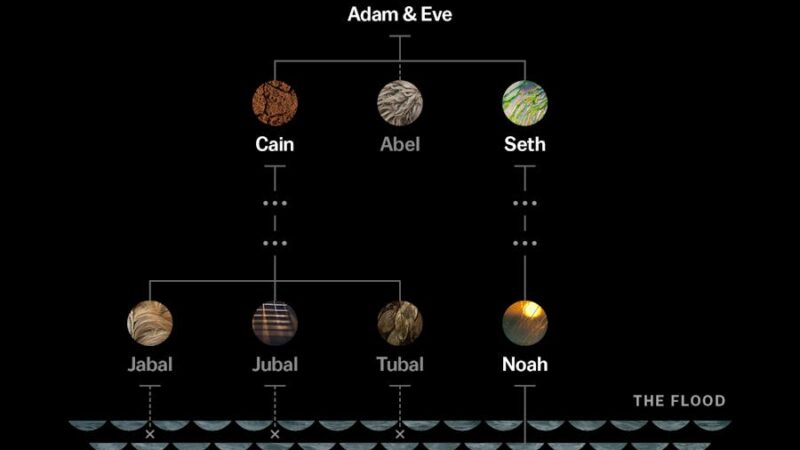5 Things Science Cannot Explain (but Theism Can)
Written by J. P. Moreland |
Tuesday, May 14, 2024
The universe is precisely fine-tuned so that life could appear. More than a hundred independent, hard facts about the universe have been discovered in the form of basic constants of nature or arbitrary physical magnitudes which are, scientifically speaking, brute facts and for which there is no further scientific explanation (e.g., the force of gravity in the universe, the charge of an electron, the rest mass of a proton, the rate of expansion resulting from the Big Bang). What blows the minds of so many is that, if any single one of these—much less all one hundred!—had been slightly larger or smaller on the order of a billionth of a percentage point or more, then no life could have appeared in the universe. The universe is a razor’s edge of precisely balanced life-permitting conditions.
The Limits of Science and Danger of Scientism
The heart of scientism is the conviction that science can explain virtually everything. If there is not a valid scientific explanation for an event or state, then that is not properly an object of our knowledge. In reality, though, there are many things that science cannot explain. And the problem is not that we lack sufficient data—the problem is that these are the sorts of things that science cannot explain, even in principle. Moreover, these things are items that we know to be true. What makes all of this especially interesting is that theism can explain them.
Let’s look at five things that theism can explain but science cannot.
1. Science Cannot Explain the Origin of the Universe
For at least three reasons, science cannot—even in principle—explain the origin of the universe.
First, science explains one aspect of the universe by appealing to another aspect of the universe, often by connecting the two by subsuming them under a law of nature. For example, we explain the formation of water by appealing to the chemical properties of hydrogen and oxygen, along with some energy-releasing event that caused the two to come together according to these chemical properties. We explain the death of the dinosaurs by appealing to different catastrophic events. In all cases of scientific explanation, one already has to have a universe in existence before scientific explanation, initial conditions, laws of nature, and so forth have something to which they can apply. Scientific explanations presuppose the universe in order for those explanations to be employed in the first place. Thus, a scientific explanation cannot be used to explain the very thing (the universe) that must exist before scientific explanation can get off the ground.
Second, scientific explanations apply to ongoing temporal states or changes of states (both are events) of various things according to relevant laws. The moving of the continents, the formation of the solar system, the development of life, the decay of uranium into lead are all events or changes of state that are explained by other events and laws that connect the events. The ongoing event of a gas retaining its pressure at constant volume is explained by the gas’s retaining its temperature according to the ideal gas law.
And so scientific explanation presupposes time (events are temporal episodes, and no sense can be given to the idea of a timeless event) and the reality of events. Two things follow from this. For one thing, science will never be able to explain the first event (the beginning of the universe) because to do so, it would have to appeal to a prior event and a law connecting them. But in this case, the origin of the universe would no longer be the first event; the prior explanatory event would be. But then, to explain this first event, one would need to postulate another prior event, and a vicious regress ensues.
For another thing, since scientific explanations tie one event to another via a law, such explanations presuppose time for those laws to be applicable. Thus, again, science cannot explain the origin of the very thing (time) that must exist before scientific explanations can be proffered in the first place.
Third, coming-into-existence is not a process but an instantaneous occurrence. Consider the process of walking into a room. One starts completely outside the room, then one is 20% into the room, then 30%, and so on, as one passes through the entrance. Finally, one is 100% in the room. But coming into existence from nothing is not a process. It is not as though the entity in question starts off being 100% nonexistent, then is 90% nonexistent and so on until it is 100% existent. Remember, by “90% nonexistent” I don’t mean that 10% of the entity fully exists and 90% is completely nonexistent. Rather, I mean that the entire entity is 10% real. It’s hard to avoid the conclusion that notions like 90% nonexistent are incoherent.
Something either does or does not exist. Period. It follows that, apart from the creative activity of God, there can be in principle no reason, no explanation for why one thing—say, the universe—popped into existence as opposed to another thing— a Honda Civic, a bass’s backbone, one half of Mount Everest, or a pair of chicken wings. Science can only be applied to transitions of one thing into another, but coming into existence is not a transition; it is, as it were, a point action or instantaneous event. So science cannot in principle explain the coming-into-existence of the universe from nothing.
2. Science Cannot Explain the Origin of the Fundamental Laws of Nature
Not all laws of nature are equally fundamental. Some can be derived from others. For example, Newton’s first law of motion (an object at rest stays at rest, and an object in motion stays in motion with the same speed and in the same direction unless acted upon by an unbalanced force) builds on Galileo’s concept of inertia (the tendency of matter to resist change in velocity; objects do not spontaneously change their velocities, which will remain constant unless acted upon by friction).
However, such derivations cannot continue indefinitely. There must be—and it is widely agreed that there are—fundamental or foundational laws of nature. But the existence and precise nature of these laws cannot be explained by science, since all scientific explanation presupposes them. As far as scientific explanation is concerned, these foundational laws are simply brute givens to be used to explain other things scientifically but which themselves cannot be explained scientifically.
So, how do we explain the existence and nature of these laws? Where did they come from? There are two major options here: (1) take them as unexplainable, brute entities, or (2) provide a theistic explanation. For many thinkers, myself included, the “unexplainable-brute-entity” option is not a good one. Since the actual brute entity might not have existed, we naturally seek an explanation as to why the contingent entity exists instead of not existing. And the fundamental laws of nature are contingent realities—after all, it is easy to conceive of worlds that have different fundamental laws of nature. So why does our world contain certain fundamental laws instead of others?
This seems like a perfectly permissible question, but some atheists reject the question on the grounds that it assumes The Principle of Sufficient Reason, which either begs the question (the only reason to believe it is if one already believes in God) or is just a brute principle that atheists are free to reject. The principle has different formulations, but one is this: For every contingent existent, there is a sufficient explanation for why it exists as opposed to not existing.
Theists have responded that the Principle of Sufficient Reason does not, in fact, presuppose the existence of God, and they insist that it is a rational principle that stands behind and justifies the human quest for explanations of why certain things exist and are what they are.
The atheist seems to be committing the informal taxicab fallacy. This fallacy occurs when someone hops into a principle or system of reason and uses that principle until he no longer likes the implication of the principle (or system), whereupon he hops out of the principle (or system) and stops using it. Applied to our discussion, we use the principle of sufficient reason all the time (e.g., when your car breaks down, your mechanic assumes there is a reason for why the engine exists in a bad way as opposed to existing in the way it should, so he tries to find that reason), and it has proven itself over and over again. But when we apply the principle of sufficient reason to the existence of the fundamental laws of nature (or, indeed, to the contingency of the universe we live in), the atheist rather arbitrarily stops using the principle because it most naturally yields a theistic explanation. He or she then jumps out of the taxicab.
3. Science Cannot Explain the Fine-Tuning of the Universe
What do we mean by fine-tuning?1 Our universe contains various constants (like the gravitational constant G in Newton’s law of gravity: F=G(m1m2/r2) and certain arbitrary physical quantities (such as the specific low entropy R2 level in the universe—the amount of disorder or useful energy to do work in the universe) that are not determined by the laws of nature but, as far as science is concerned, are brute facts that are just there.2
Read More
Related Posts:






